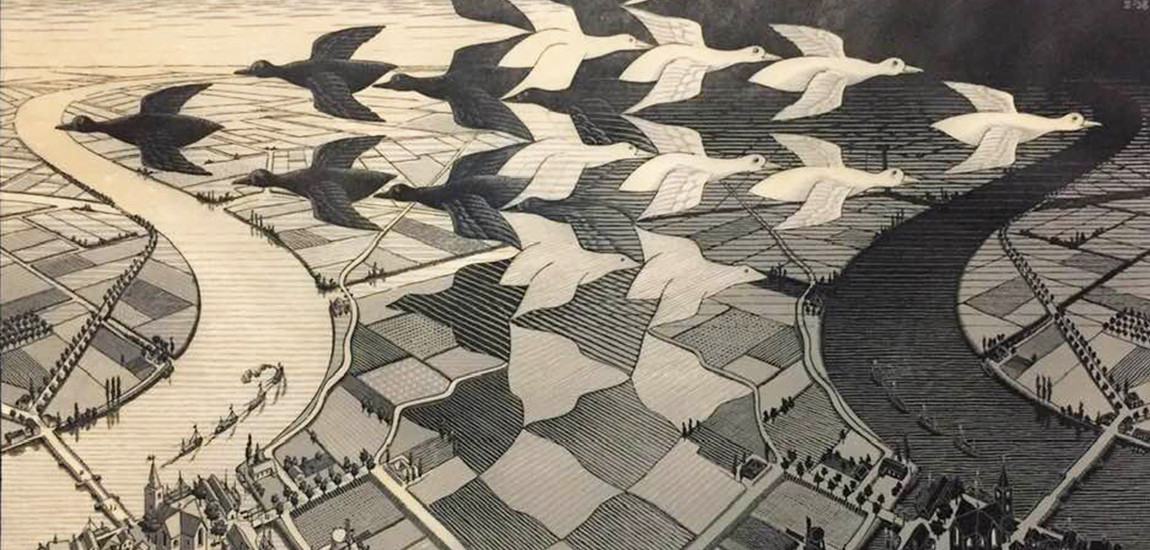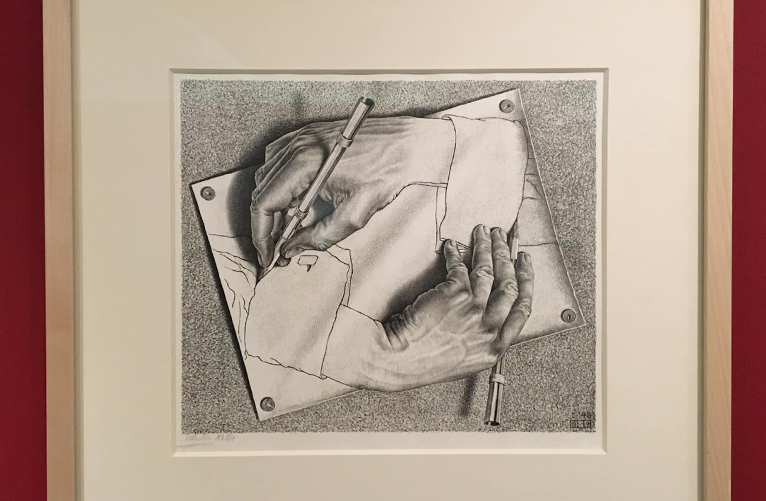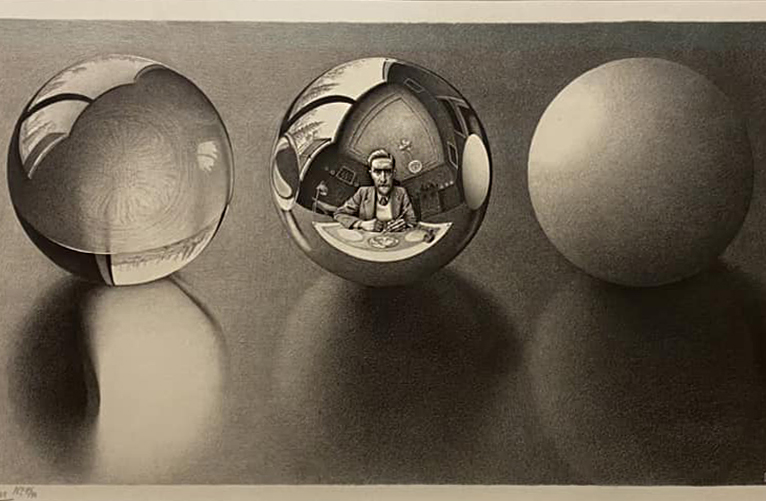
Escher's visionary worlds in Florence
Creator of visionary, ingenious, impossible worlds, M.C. Escher was one of the most original artists of the 20th century. His woodcuts, lithographies and engravings have now become part of our collective imaginary and still manage to fascinate and amaze today.
The great Florentine exhibition, hosted in the halls of the Museo degli Innocenti, offers more than 200 works by the Dutch artist, divided into 8 sections, which present some of his most iconic works, including Self-Portrait in the Mirror (1935) and Drawing Hands (1948).
The exhibition starts from his first works inspired by Art Nouveau, from which emerge salso his interest in nature and landscapes, and then articulates in a path that illustrates his entire prolific career, influenced by his frequent travels.
Escher visited Italy for the first time with his parents and then returned several times, attracted by the scenic and architectural beauties, before moving there in 1923. He lived here for years, studying the landscapes and geometries that underlie the elements of nature.
Despite his love for Italy, he had to leave when, in the years before the Second World War, the political climate began to get heavy.
He then moved first to Switzerland and then to Spain,
in 1936. The latter travel however proved to be very important for the
maturation of his graphic art. In fact, after visiting the Alhambra in
Granada, he developed an interest in Moorish tessellations, geometric
decorations based on repeating shapes, covering an entire surface.

Escher studied this form of decoration in depth and assimilated it to his own art, modifying the purely geometric forms and transforming them into animated figures: geometries that become birds, fish, lizards, to then return to assume a geometric structure like that of a hive. Sometimes this metamorphosis is used by the artist to outline complementary and at the same time opposite elements, even better highlighted by the graphic color scheme of black and white.
Always attracted by the structure of space, after leaving Italy, he no longer represented the world in a linear way, but began to shape it as he pleases, showing us different points of view at the same time, creating three-dimensional, impossible, surprising images that confuse and fascinate the observer.
Architectures intersect, spaces lose gravity and limits, showing us structures that are articulated in a circular way and where the figures who inhabit them get lost as in a labyrinth with no exit.
This combination of nature, science, mathematics, design and art have made Escher's works particularly appreciated not only by the general public but also by the scientific community.
The interpenetration of different worlds, of different points of view, and of tessellation, are stylistic features characteristic of Escherian art, which is recognizable at first sight.
Represented with great precision and richness of
detail, these impossible images, if seen in real life, are even more powerful
and capable of hypnotizing the observer. You have time to go and admire them
until March 26th!




